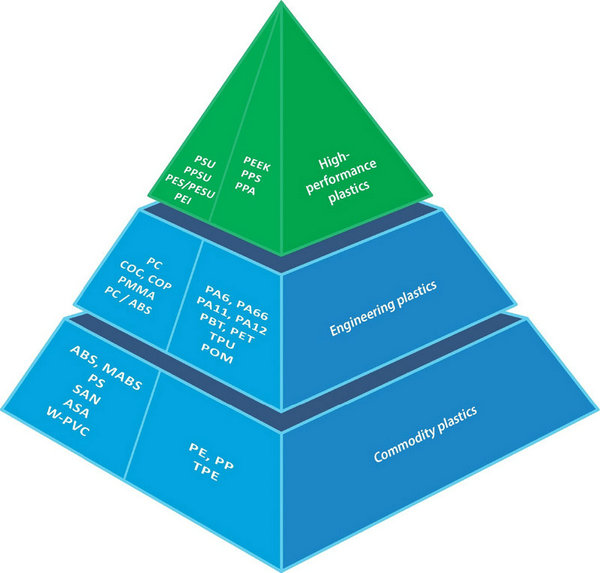
PEEK (Polyether Ether Ketone), PPS (Polyphenylene Sulfide), and PES (Polyethersulfone) are high-performance thermoplastics, each with distinct properties that make them suitable for various applications. Here's a comparison of PEEK with PPS and PES based on their thermal stability, mechanical properties, and chemical resistance.
Thermal Stability
PEEK: Has a melting point of approximately 343°C (650°F) and can operate continuously at temperatures up to 260°C (500°F) without significant degradation. This makes it ideal for high-heat applications’.
PPS: Melting point is around 280°C (536°F) with a continuous operating temperature of about 250°C (482°F). While it has good thermal stability, it cannot withstand the same high temperatures as PEEK’.
PES: Typically used in applications requiring operation up to 220°C (428°F). It has lower thermal resistance compared to both PEEK and PPS’.
Mechanical Properties
PEEK: Exhibits high tensile strength (up to 29,000 psi for reinforced grades) and superior impact resistance, making it highly durable under mechanical stress. It also has excellent creep resistance and dimensional stability.
PPS: Offers good compressive strength but is generally more brittle than PEEK. Its wear resistance is reported to be six times better than that of PEEK, making it suitable for applications requiring high wear resistance.
PES: While it has decent mechanical properties, it falls short of PEEK in terms of tensile strength and impact resistance. It is more flexible but less durable under extreme conditions.
Chemical Resistance
PEEK: Known for its excellent chemical resistance across a wide range of substances, including steam and hot water. It does not undergo hydrolysis and maintains its properties in harsh environments.
PPS: Exhibits superior chemical resistance compared to PEEK, particularly against acids and bases. It can withstand exposure to many solvents without degradation.
PES: Offers good chemical resistance but is generally less effective than both PEEK and PPS in harsh environments. It may degrade when exposed to certain chemicals over time.
Cost Considerations
PEEK: Generally the most expensive of the three due to its superior properties and performance capabilities. Its high cost can be justified in critical applications where performance is paramount.
PPS: More cost-effective than PEEK, making it an attractive alternative for applications that do not require the extreme performance characteristics of PEEK.
PES: Also less expensive than PEEK but offers limited performance benefits, making it suitable for specific applications where high heat or chemical resistance is not critical.
Conclusion
In summary, PEEK outperforms both PPS and PES in terms of thermal stability, tensile strength, and overall mechanical properties. However, PPS offers better chemical resistance at a lower cost, making it suitable for many industrial applications where extreme heat is not a factor. PES serves as a more economical option but lacks the high-performance characteristics of both PEEK and PPS. The choice between these materials should be based on the specific requirements of the application at hand.